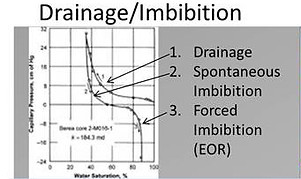

Services



I'm a paragraph. Click here to add your own text and edit me.

3D Petrophysical Modelling
In any hydrocarbon field, there is usually at least one exploration well and a 3D seismic data survey of the entire field. Algorithms developed by iRPM calibrate the 3D seismic data to the petrophysical well results, from one or more exploration wells. The algorithms then populate the petrophysical properties in 3D space constrained to the 3D seismic.
This means that hydrocarbon volumes of STOIIP (oil) and GIIP (gas) can be determined constrained to the 3D seismic. This identifies the drill locations that will generate the highest production from the field.
These algorithms are blind tested against the petrophysical results from existing well logs and predict new results from wells yet to be drilled. Blind testing is a critical step that validates the 3D model, but we have found that this is rarely ever done. All predictions can also be refined and calibrated against static and dynamic, core rock measurements if available.
Benefit#1: The iRPM methodology can remove the need for additional well log data to appraise the potential of the discovered field, resulting in cost savings of $100million per unneeded appraisal well. The entire prediction process takes 2-4 weeks, and can significantly increase the NPV of the project because development of the project can start much sooner and significant capital can be saved and invested in additional projects.
Benefit#2: Additionally, for mature brownfield sites, the dynamic algorithms developed by iRPM can be used to determine the ultimate recovery of the field. These dynamic algorithms help identify flushed zones and bypass hydrocarbons in an existing producing field.
Saturation Height Modelling
Resistivity based saturation determination can use one of several methodologies namely Archie, Juhasz, Waxman Smits, Indonesian and Simandoux each of which can be calibrated to core data. However these methods cannot be used for populating in the 3D modelling space.
Saturation Height Modelling can be applied to any well in the field and also the 3D modelling space. Based upon capillary pressure (centrifuge, porous plate and/or mercury injection) both drainage and imbibition functions can be determined and employed. The drainage functions capture the STOIIP and GIIP of the hydrocarbon field and the imbibition function captures the residual saturation volume left behind after natural water influx, or even when enhanced recovery mechanisms are used like pressure maintenance with water injection, high temperature injection, gas injection or even chemical injection for enhanced oil recovery.
The Saturation Height Modelling is then able to determine the ultimate recoverable volumes and predict the end of field life for any brown (producing) field. Contact us to receive presentation material that explains the Saturation Modelling process and how it can be applied to your field.
Petrophysical Uncertainty
Interpretation uncertainty is a major determinant required to assess the commercial viability of any hydrocarbon field. IRPM can determine the uncertainty associated with core data measurements, log data interpretation, Seismic Inversion uncertainty and also the uncertainty associated with up-scaling between each of these domains. The greatest uncertainty will always be the 3D Static model.
Contacts us to receive presentation material that quantities the uncertainties associated with each of these data domains.



